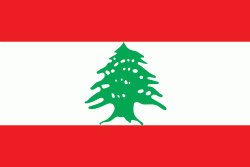Amioun (Amioûn)
Amioun (أميون, ) is the capital of the predominantly Greek Orthodox Koura District (i.e. χώρα, "country" in Greek) in the north of Lebanon.
The town of Amioun derives its name from the Aramaic language, meaning "'am Yawan" "place of the Greeks", with a possible alternative root fortified town with roman temples. Amioun is located on the top of an ancient hill dating back to before the 2nd millennium B.C., and the town was called "Amia" during this period. The word Amia was cited in the letters of Tell el Amarna, which were sent in the 14th century B.C. by local governors to their overlords, the pharaohs of Egypt. In his etymological study of the names of Lebanon's towns and villages, historian Anis Freiha asserted that Amia is in turn derived from the Semitic word emun, meaning "invincible fort".
The town of Amioun derives its name from the Aramaic language, meaning "'am Yawan" "place of the Greeks", with a possible alternative root fortified town with roman temples. Amioun is located on the top of an ancient hill dating back to before the 2nd millennium B.C., and the town was called "Amia" during this period. The word Amia was cited in the letters of Tell el Amarna, which were sent in the 14th century B.C. by local governors to their overlords, the pharaohs of Egypt. In his etymological study of the names of Lebanon's towns and villages, historian Anis Freiha asserted that Amia is in turn derived from the Semitic word emun, meaning "invincible fort".
Map - Amioun (Amioûn)
Map
Country - Lebanon
 |
 |
| Flag of Lebanon | |
The earliest evidence of civilization in Lebanon dates back to 5,000 BCE. From c. 3200–539 BC, it was home to the flourishing Phoenician civilization before being annexed by various Near Eastern empires. In 64 BC, the Roman Empire conquered the region, and the region became a major center for Christianity under the Byzantine Empire. In the 7th century, the Muslim conquest of the Levant established caliphal rule. The 11th century saw the start of the Crusades and the establishment of Crusader States in the region only for it to be later reclaimed by the Ayyubids and Mamluks before being ceded to the Ottoman Empire in the 16th century. Under Sultan Abdulmejid I, the first Lebanese protostate took form in the 19th century as the Mount Lebanon Mutasarrifate, created as a home for the Maronite Christians under the Tanzimat reforms.
Currency / Language
| ISO | Currency | Symbol | Significant figures |
|---|---|---|---|
| LBP | Lebanese pound | لل | 2 |
| ISO | Language |
|---|---|
| AR | Arabic language |
| HY | Armenian language |
| EN | English language |
| FR | French language |















